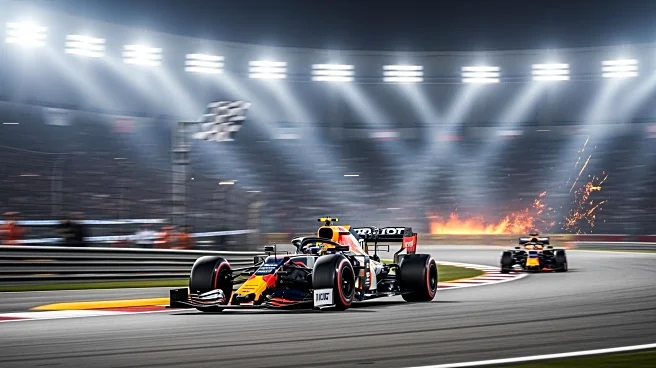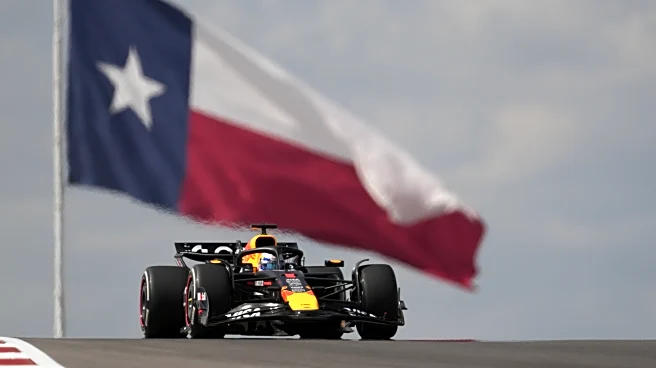What's Happening?
The 54th U.S. Grand Prix is set to take place at the Circuit of the Americas in Austin, Texas. The race will cover a 3.426-mile course with 20 turns, spanning 56 laps for a total of 191.634 miles. Max
Verstappen, who secured P1 in the previous day's sprint race, will start at the front of the grid. Lando Norris and Charles Leclerc, the defending champion, will start in P2 and P3, respectively. The current World Drivers Championship leader, Oscar Piastri, will begin in P6, following George Russell and Lewis Hamilton. The race is scheduled to start at 3 p.m. ET and will be broadcast on ABC. For those without cable, streaming options include DIRECTV, which offers a five-day free trial, and Sling TV, which provides access to ABC starting at $19.99 per month.
Why It's Important?
The U.S. Grand Prix is a significant event in the Formula 1 calendar, attracting global attention and showcasing top-tier racing talent. The race not only highlights the competitive standings of drivers like Max Verstappen and Oscar Piastri but also impacts team strategies and sponsorships. The event's broadcast on major networks like ABC and availability on streaming platforms reflects the growing demand for accessible sports content. This accessibility can increase viewership and fan engagement, potentially influencing the sport's popularity in the U.S. market. The race also contributes to the local economy in Austin, drawing visitors and boosting tourism-related businesses.
What's Next?
As the race unfolds, attention will be on the performance of key drivers and any strategic decisions made by teams. The outcome could affect the standings in the World Drivers Championship, with potential implications for team dynamics and future races. Fans and analysts will be watching for any unexpected developments or standout performances that could shift the competitive landscape. Additionally, the success of the broadcast and streaming options may influence how future races are made available to audiences, potentially shaping the future of sports media consumption.













